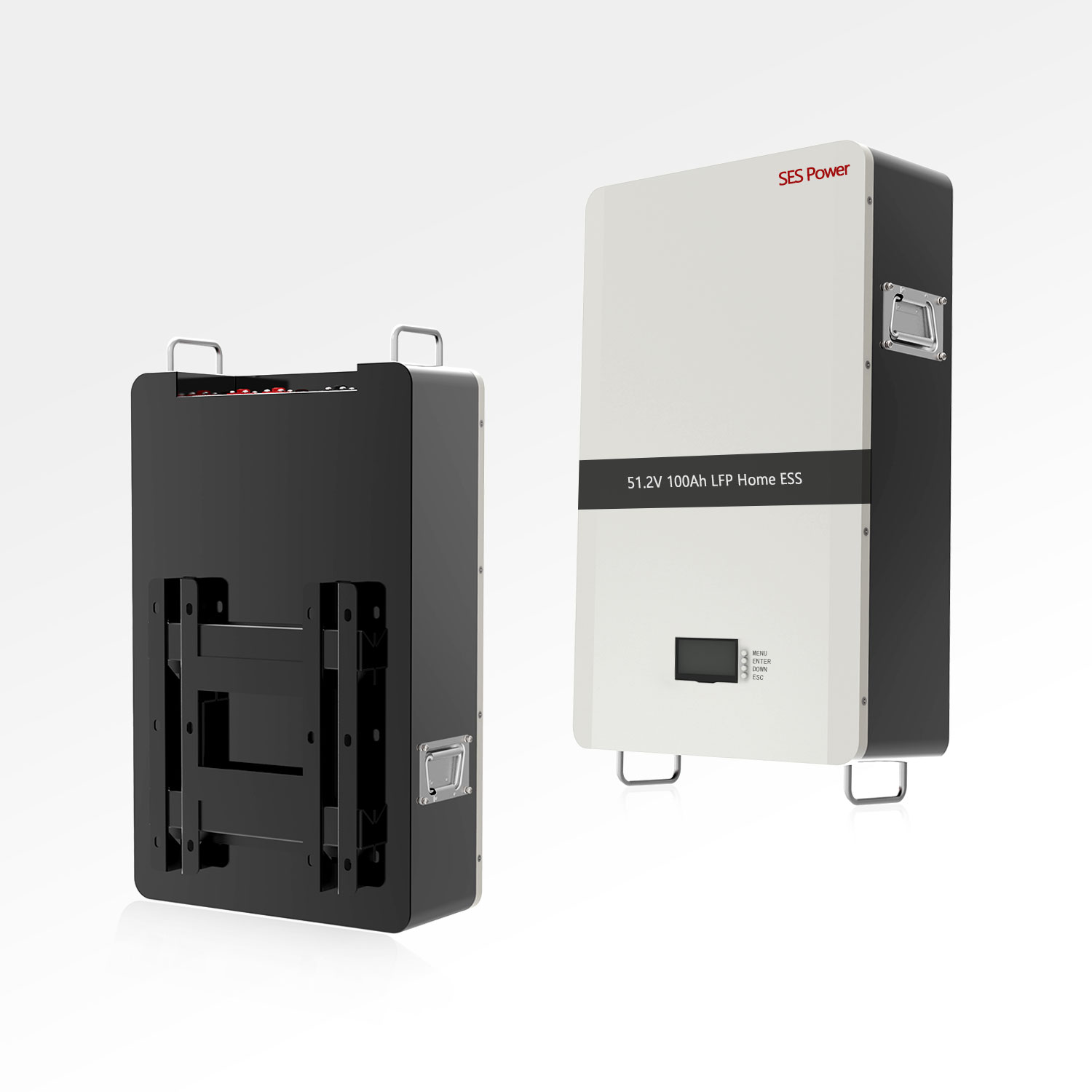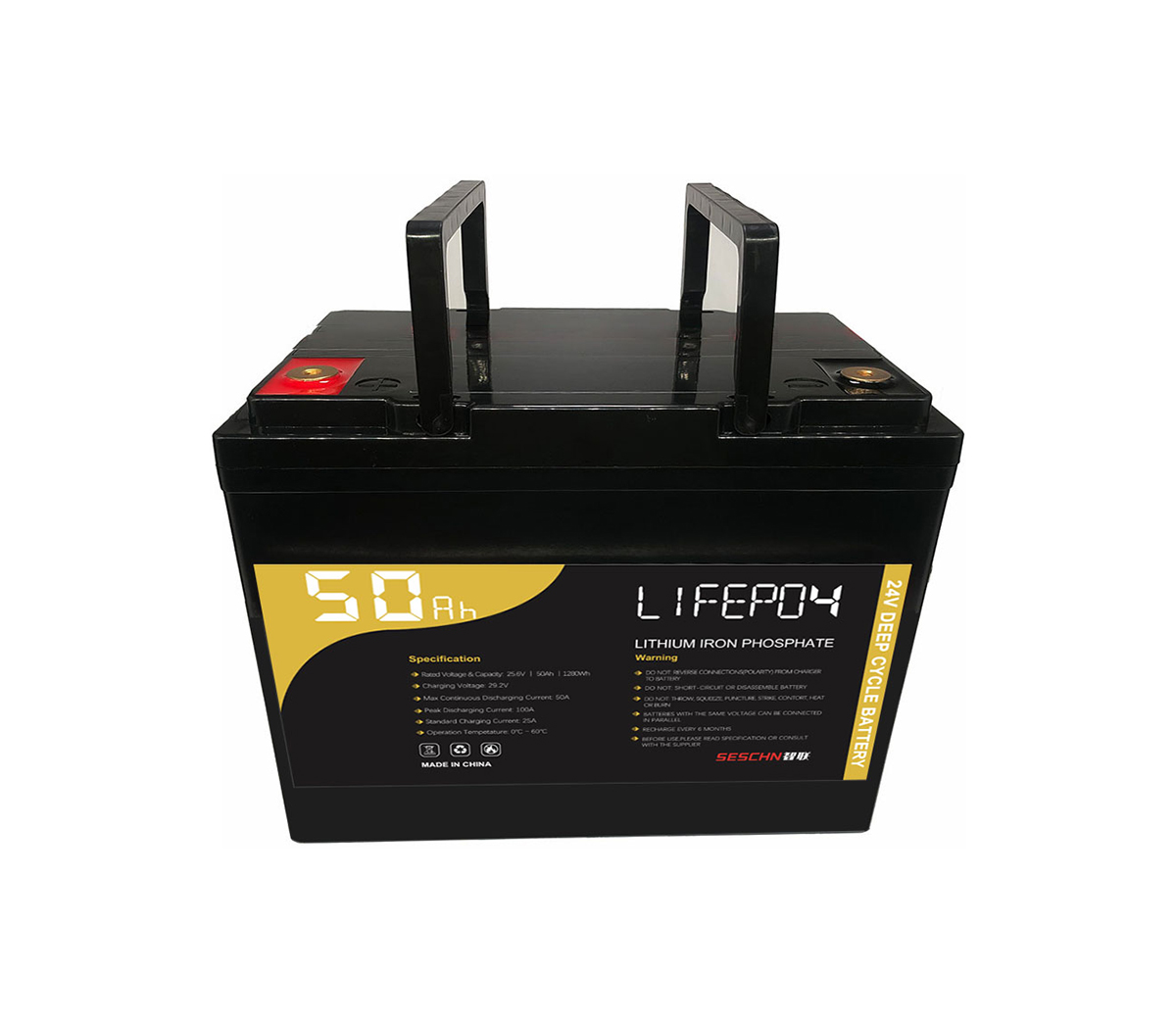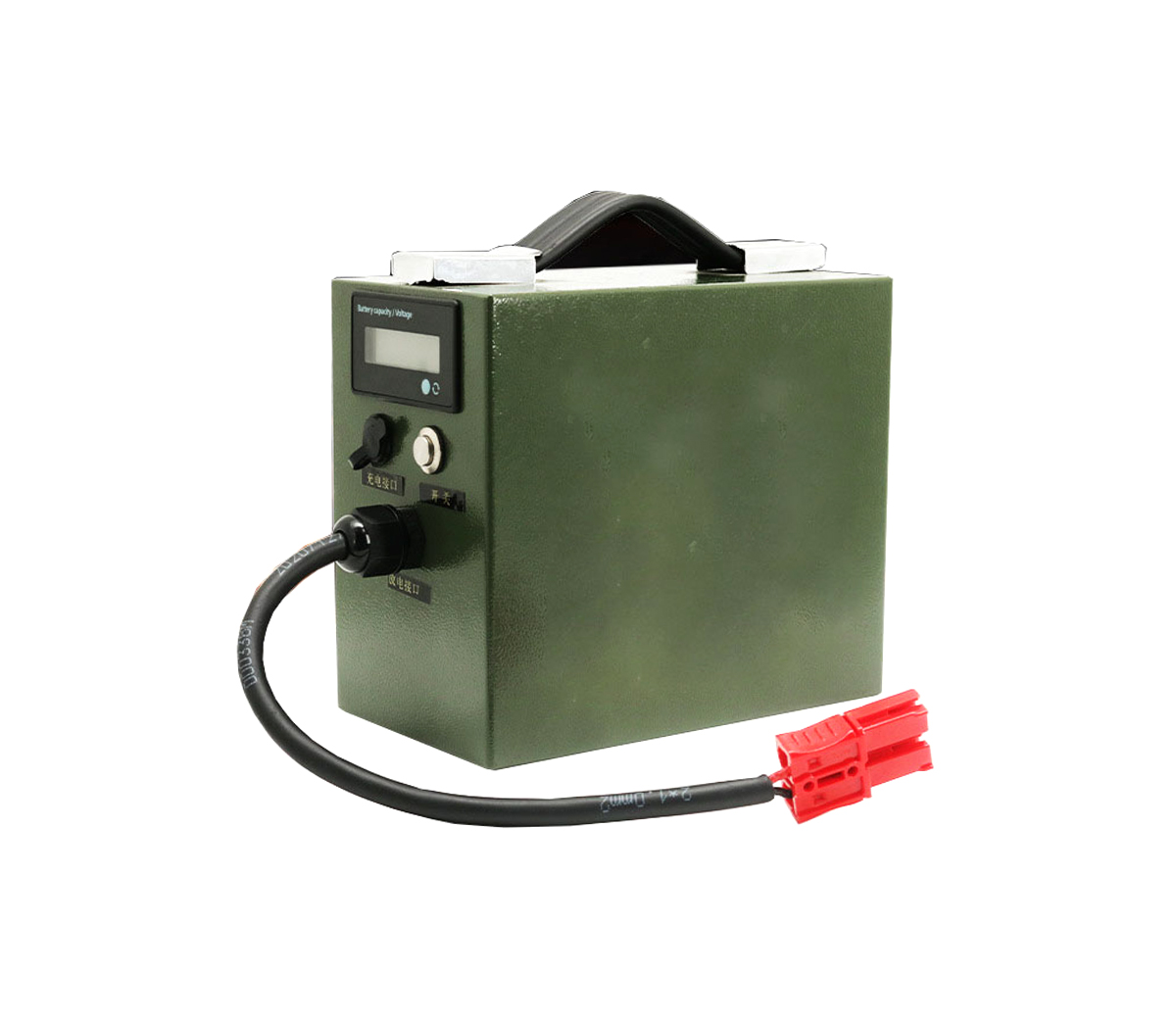The speed of updating electronic products is very fast, and their requirements for the high rate of charge and discharge performance of lithium batteries are increasingly high, and the internal resistance is an important factor affecting the power performance and discharge efficiency of the battery, its initial size is mainly determined by the structural design of the battery, the performance of raw materials and process technology.
In the use of lithium batteries, the performance will continue to decay, mainly in the form of capacity decay, internal resistance increase, power decline, etc… The change of internal resistance of Li-ion battery is affected by temperature, depth of discharge and other conditions of use.

SES Power has a deep understanding of the performance of lithium batteries, as we have been engaged in the lithium battery industry for nearly 20 years. Our products will choose different varieties and performance of cells according to different application scenarios to achieve the best cost performance, such as lead-acid replacement products (12V100Ah, 12V200Ah, 24V100Ah) will use square aluminum-cased lithium iron phosphate with balanced performance, high-current (2000A) starter lithium battery, UPS high-voltage lithium battery system (up to 860V), etc. Products will be used with high multiplier performance of the battery, 3Kw ~ 20Kw off-grid, grid-connected, islanding lithium battery energy storage system, wall-mounted home energy storage system 48V100Ah, 48V200Ah, stacked energy storage system (single 51.2V100Ah, up to 15 stacked support), etc. will use high-quality CATL, EVE and other original A-class lithium phosphate lithium iron phosphate battery.
Internal resistance is an important parameter of Li-ion battery, let us explain the knowledge of internal resistance of Li-ion battery for you.
A: What is the internal resistance of lithium battery
Internal resistance is a lithium battery in operation, the current flow through the internal resistance of the battery.
Usually, the internal resistance of Li-ion battery is divided into ohmic internal resistance and polarized internal resistance. Ohmic internal resistance is composed of electrode material, electrolyte, diaphragm resistance and contact resistance of various parts. Polarization internal resistance is the resistance caused by polarization during electrochemical reaction, including electrochemical polarization internal resistance and concentration difference polarization internal resistance.
The ohmic internal resistance of the battery is determined by the total conductivity of the battery, and the polarization internal resistance of the battery is determined by the solid phase diffusion coefficient of lithium ions in the electrode active material.
B: What is the ohmic internal resistance of lithium battery? How to reduce it?
Ohmic internal resistance is mainly divided into three parts, one is ionic impedance, the other is electronic impedance, and the third is contact impedance. We hope that the smaller the internal resistance of Li-ion battery, then we need to take specific measures to reduce the ohmic internal resistance for these three components.
Lithium battery ionic impedance refers to the resistance to the transfer of lithium ions inside the battery, which is mainly affected by the positive and negative electrode materials, diaphragm and electrolyte. To reduce ionic impedance, the following points need to be done.
1, to ensure that the cathode and anode materials and electrolyte have good wettability, in the design of the pole piece need to select the appropriate compaction density, if the compaction density is too large, the electrolyte is not easy to wettability, will improve the ion impedance.
2. The electrolyte should have suitable concentration, viscosity and conductivity. When the viscosity of electrolyte is too high, it is not conducive to the infiltration between it and the positive and negative live materials. The conductivity of the electrolyte is the most important factor affecting the ionic impedance.
3, choose the right diaphragm.
Electron impedance of the influence of more factors, you can start from the material, process and other aspects to improve.
1, the positive and negative electrode plate affects the electronic impedance of the main factors are: live matter and fluid collection contact, live matter itself factors, pole plate parameters. Live material to be in full contact with the collector decent, can be considered from the collector copper foil, aluminum foil substrate, positive and negative electrode paste bonding.
2, the diaphragm on the electronic impedance of the main factors are: diaphragm thickness, porosity, and by-products of the charging and discharging process. The first two are easy to understand, after the disassembly of the cell will often find a thick layer of brown material on the diaphragm, including graphite negative electrode and its reaction by-products, it will cause the diaphragm hole blockage, reducing battery life.
3, the collector material, thickness, width and its contact degree with the pole lug will affect the electronic impedance. Collector fluid needs to choose the substrate material without oxidation passivation, otherwise it will affect the impedance size. Poor welding between copper and aluminum foil and lug will also affect the electronic impedance.
C: What is the polarization internal resistance of Li-ion battery? How to reduce it?
When the current passes through the electrode, the phenomenon that the electrode potential deviates from the equilibrium electrode potential is called the polarization of the electrode.
Polarization includes ohmic polarization, electrochemical polarization and concentration difference polarization. The polarization resistance is the internal resistance caused by the polarization of the positive and negative electrodes of the battery during the electrochemical reaction, which reflects the internal consistency of the battery.
The internal resistance of polarization is not a constant and changes over time during the charging and discharging process because the composition of the active material, the concentration of the electrolyte and the temperature are constantly changing.
The ohmic internal resistance obeys Ohm's law, and the polarized internal resistance increases with the increase of current density, but it is not a linear relationship.
1、The influence of structure design
In the design of battery structure, in addition to the riveting and welding of the battery structure itself, the number, size and position of the battery lugs directly affect the size of the internal resistance of the battery. To a certain extent, increasing the number of lugs can effectively reduce the internal resistance of the battery. Compared with coiled batteries, stacked batteries are equivalent to dozens of small cells in parallel, and their internal resistance is smaller.
2, the impact of raw material performance
The cathode material in lithium batteries is the lithium storage side, more determine the performance of lithium batteries. Optimizing the cell volume can effectively reduce the charge transfer impedance of the cathode material.
Activated polarization, especially the significant increase in negative electrode activation polarization is the main reason for serious polarization. Reducing the particle size of negative electrode can effectively reduce the negative electrode activation polarization.
Graphite is widely used in the field of lithium batteries because of its good performance. Compared with graphite-based conductive agents, the battery multiplier performance of positive electrode with carbon black-based conductive agents is better.
Reducing the interfacial resistance between the collector and the active material and improving the bond strength between them are important means to enhance the performance of lithium batteries. Coating the conductive carbon coating on the surface of aluminum foil and corona treatment of aluminum foil can effectively reduce the interfacial resistance of the battery. Compared with the normal aluminum foil, the use of carbon coated aluminum foil can reduce the internal resistance of the battery by about 65%, and can reduce the increase of internal resistance during the use of the battery.
The ion conduction inside the battery depends on the diffusion of Li ions in the electrolyte through the pores of the diaphragm, and the wettability of the diaphragm is the key to forming a good ion flow channel, when the diaphragm has a higher wettability and porous structure, it can improve the conductivity and reduce the impedance of the battery, and improve the multiplier performance of the battery.
From the process and use conditions and other factors affecting the internal resistance of the battery mainly include.
3、The influence of process factors
The uniformity of the paste dispersion affects whether the conductive agent can be uniformly dispersed in the active material and its close contact, and the battery resistance. By increasing the high-speed dispersion, the uniformity of the slurry dispersion can be improved, the smaller the internal resistance of the battery.
The surface density is one of the key parameters in battery design. When the battery capacity is certain, increasing the surface density of the electrode will inevitably reduce the total length of the collector and diaphragm, and the ohmic internal resistance of the battery will be reduced, so within a certain range, the internal resistance of the battery decreases as the surface density increases.
To a certain extent, the internal resistance of the cell decreases with the increase of compaction density, because the compaction density increases, the distance between the raw material particles decreases, the more contact between the particles, the more conductive bridges and channels, and the cell impedance decreases. The control of compaction density is mainly achieved by the roll thickness. Different roll thickness has a greater impact on the internal resistance of the battery. When the roll thickness is larger, the contact resistance between the active material and the collector fluid increases due to the failure of the active material to be rolled closely, and the internal resistance of the battery increases.
Different shelving time of the anode sheet has a greater influence on the internal resistance of the battery. When the shelving time is short, the internal resistance of the battery increases more slowly; when the shelving time is long (more than 23h), the internal resistance of the battery increases more obviously.
The ionic conductivity of the electrolyte determines the internal resistance and multiplicative characteristics of the battery. The size of the electrolyte conductivity is inversely proportional to the viscosity of the solvent, and is also affected by the concentration of lithium salt and the size of the anion.
D: Different conditions of use will affect the internal resistance of lithium battery?
1、Temperature
The effect of temperature on the size of internal resistance is obvious. The lower the temperature, the slower the ion transport inside the battery, the greater the internal resistance of the battery. Below -20℃, the charge reaction resistance accounts for almost 100% of the total internal resistance of the battery.
2、SOC
When the battery is in different SOC, its internal resistance size is different, especially the DC internal resistance directly affects the power performance of the battery, which in turn reflects the battery performance in the actual state: lithium battery DC internal resistance increases with the increase of the battery discharge depth DOD, the size of the internal resistance is basically unchanged in the discharge interval of 10% to 80%, and the internal resistance generally increases significantly in the deeper depth of discharge.
3、Storage
With the increase of lithium-ion battery storage time, the battery continues to age, the internal resistance also increases. Different types of lithium batteries vary in the degree of change in internal resistance. After a long storage period of 9-10 months, the rate of increase in internal resistance of LFP batteries is higher than that of NCA and NCM batteries. The rate of increase of internal resistance is related to storage time, storage temperature and storage SOC.
4、Cycling
Regardless of storage or cycling, the effect of temperature on the internal resistance of the battery is consistent, the higher the cycling temperature, the greater the rate of increase of internal resistance. And different cycling intervals have different effects on the internal resistance of the battery. The internal resistance of the battery accelerates with the increase of the depth of charge and discharge, and the increase of the internal resistance is proportional to the strengthening of the depth of charge and discharge.
5、Charge cut-off voltage
In addition to the influence of charging and discharging depth in the cycle, the charging cut-off voltage also has influence: too low or too high charging voltage upper limit will make the interface impedance of the electrode increase, too low upper limit voltage will not be able to form passivation film well, while too high voltage upper limit will lead to electrolyte oxidation decomposition on the surface of LiFePO4 electrode to form products with low conductivity.

E: Summary
Internal resistance is an important parameter for measuring Li-ion power performance and evaluating battery life. The larger the internal resistance, the worse the multiplier performance of the battery and the faster it increases in storage and cyclic use.
And the internal resistance is related to the cell structure, cell material properties and manufacturing process, and varies with the ambient temperature and charge state.
Therefore, the development of low internal resistance battery is the key to improve battery power performance, and at the same time, it is very important and practical to master the change law of battery internal resistance for battery life prediction.
If you have any questions about lithium batteries, you are welcome to contact SES Power.




































